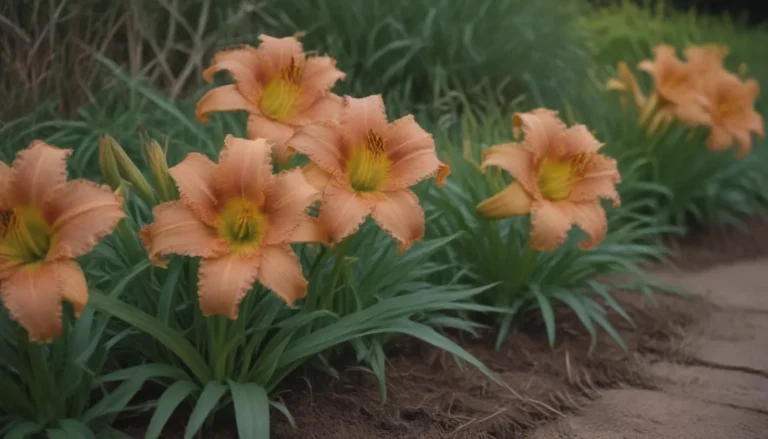Guide to Growing and Caring for Mustard Plants

Are you interested in adding a unique and flavorful crop to your garden? Look no further than mustard plants! Not only do they provide delicious greens for your culinary creations, but they also offer a host of benefits for your garden’s ecosystem. In this comprehensive guide, we’ll walk you through everything you need to know about growing and caring for mustard plants.
Why Grow Mustard Plants?
Mustard plants are an excellent addition to your garden for several reasons. First and foremost, their leaves are incredibly versatile in the kitchen, adding a peppery kick to salads, stir-fries, and more. They’re also fast-growing, allowing you to harvest fresh greens in as little as 30 days. Many mustard varieties are cold-hardy, making them an ideal crop for early spring or late fall planting. Finally, mustard plants release compounds that can help repel certain pests, benefiting your entire garden.
Choosing the Right Mustard Variety
With numerous mustard varieties available, each with its own unique flavor profile and growth habits, it’s essential to select the right one for your needs. Some popular options include Southern Giant Curled, an heirloom variety that produces large, frilled leaves with a spicy flavor; Florida Broadleaf, known for its broad, flat leaves, excellent for cooking and pickling; Red Giant, which boasts stunning purple-red leaves and a milder flavor compared to other mustards; and Tendergreen, a mild-flavored variety perfect for those who prefer a less spicy mustard green.
When selecting a mustard variety for your garden, consider your climate, available space, and personal taste preferences. Some varieties may perform better in specific growing conditions or fit better within your garden layout.

Preparing the Growing Site
To ensure your mustard plants thrive, it’s crucial to prepare the growing site properly. Start by choosing a sunny location that receives at least 6 hours of direct sunlight daily. Clear the area of weeds and debris, and loosen the soil to a depth of 8-12 inches. Incorporating compost or well-rotted manure into the soil will improve its fertility and structure, promoting healthy plant growth.
If your soil is particularly heavy or clay-like, consider raised beds or container gardening to ensure proper drainage. Mustard plants require well-draining soil to prevent root rot and other moisture-related issues.
Planting Mustard Seeds
Mustard plants can be grown from seeds directly sown in the garden or started indoors for transplanting later. If sowing directly outdoors, wait until the soil temperature reaches at least 40°F (4°C) and the risk of frost has passed. Plant seeds 1/4 to 1/2 inch deep, spacing them 1-2 inches apart in rows 12-18 inches apart.
For indoor seed starting, sow seeds in trays or pots filled with a high-quality seed starting mix 4-6 weeks before the last expected frost date. Keep the soil moist but not soggy, and provide plenty of light. Once the seedlings have developed their first set of true leaves and the risk of frost has passed, harden them off by gradually exposing them to outdoor conditions before transplanting them to the garden.
Caring for Mustard Plants
Mustard plants are relatively low-maintenance, but they do require some basic care to ensure healthy growth and abundant harvests. Water your plants regularly, keeping the soil consistently moist but not waterlogged. Apply a layer of mulch around the plants to help retain moisture and suppress weed growth.
Fertilize your mustard plants every 3-4 weeks with a balanced, water-soluble fertilizer to support vigorous growth. Be careful not to over-fertilize, as this can lead to excessive leaf growth at the expense of flavor.
Monitor your plants for signs of pests or diseases, such as aphids, flea beetles, or powdery mildew. If issues arise, address them promptly using appropriate organic or chemical control measures.
Harvesting and Using Mustard Greens

Mustard greens can be harvested as soon as the leaves are large enough to use, typically 30-45 days after planting. For a continuous supply, practice succession planting by sowing new seeds every 2-3 weeks. To harvest, either pick individual leaves or cut the entire plant about an inch above the soil surface, allowing it to regrow.
Mustard greens are incredibly versatile in the kitchen. They can be enjoyed raw in salads, sautéed, stir-fried, or added to soups and stews. The peppery flavor of mustard greens pairs well with garlic, ginger, and a variety of spices. Experiment with different preparation methods and flavor combinations to find your favorite ways to enjoy this nutritious and delicious crop.
Conclusion
Growing mustard plants in your garden is a rewarding experience that offers both culinary and ecological benefits. By following this guide and providing your mustard plants with the proper care and attention, you’ll be able to enjoy a bountiful harvest of flavorful, nutritious greens throughout the growing season. So why not add mustard plants to your garden today and discover the joys of growing and savoring this incredible crop?





